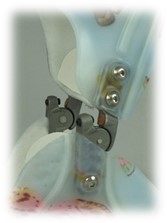To assist with planning your 2015 Orthotics, Prosthetics & Pedorthics Industry education and product showcase schedule, here’s a list of events, dates, and locations we’ve compiled for O&P practitioners, technicians, students, and staff.
**Schedule Updated March 18, 2015**
| Event | Date | Location |
| Hanger Education Fair | 2-7 Feb. 2015 | Las Vegas, Nevada |
| Academy Annual Meeting & Symposium | 18-21 Feb. 2015 | New Orleans, Louisiana |
| ISPO Deutschland 2015 | 27-28 Feb. 2015 | Germany |
| Short Course on Ankle-Foot Orthoses | 9-10 March 2015 | Glasgow, United Kingdom |
| PrimeFare West 2015 | 20-21 March 2015 | Denver, Colorado |
| Georgia Society AAOP Meeting | 27-28 March 2015 | Atlanta, Georgia |
| Ohio Chapter AAOP Meeting | 27-28 March 2015 | Columbus, Ohio |
| Annual Congress in Technical Orthopedics | 27-29 March 2015 | Germany |
| Rehacare & Orthopedic Canton 2015 | 27-29 March 2015 | Guangzhou, China |
| Northwest Chapter AAOP Meeting | 16-18 April 2015 | Bellevue, Washington |
| CAPO Conference 2015 | 22-24 April 2015 | Montreal, QC Canada |
| IAAPOC Annual Meeting | 30 April-2 May 2015 | Virginia Beach, Virginia |
| World Confederation of Physical Therapy | 1-4 May 2015 | Singapore |
| SOSORT 10th Annual Meeting | 7-9 May 2015 | Katowice, Poland |
| ACPOC 2015 Annual Meeting | 13-16 May 2015 | Clearwater Beach, Florida |
| WAMOPA Annual Meeting | 14-16 May 2015 | Reno, Nevada |
| Pennsylvania Chapter AAOP Meeting | 14-16 May 2015 |
Washington, PA |
| 7th Intl Symposium on Diabetic Foot | 20-23 May 2015 | The Netherlands |
| Louisiana Association State Meeting | 28-30 May 2015 | Lafayette, Louisiana |
| Midwest Chapter AAOP Meeting | 27-29 May 2015 |
Rosemont, Illinois |
| Michigan O&P Association Meeting | 11-12 June 2015 |
Bay City, Michigan |
| PrimeFare East 2015 | 19-20 June 2015 |
Nashville, Tennessee |
| New York State Chapter AAOP Meeting | 17-19 June 2015 | Albany, New York |
| ISPRM 9th World Congress | 19-23 June 2015 | Berlin, Germany |
| ISPO World Congress 2015 | 22-25 June 2015 | Lyon, France |
| Amputee Coalition National Conference | 23-25 July 2015 | Tucson, Arizona |
| Florida Chapter AAOP Meeting | 30 July-1 August 2015 | Fort Myers, Florida |
| Texas Chapter AAOP Meeting | 31 July-1 August 2015 | San Antonio, Texas |
| PFA/APMA Symposium 2015 | 23-26 July 2015 | Orlando, Florida |
| Tennessee Society O&P Meeting | 17-19 Sept. 2015 | Chattanooga, Tennessee |
| ISPO Canada Symposium | 2-3 October 2015 | Toronto, Canada |
| AOPA National Assembly 2015 | 7-10 October 2015 | San Antonio, Texas |
| Northern Plains Chapter AAOP Meeting | 10-11 Sept 2015 |
Minneapolis, Minnesota |
| NC/SC Chapter AAOP Meeting | 1-3 October 2015 |
Charlotte, North Carolina |
| New England Chapter AAOP Meeting | 28-30 Sept 2015 | Manchester, NH |
| PrimeFare Central | 24-25 April 2015 |
OKC, Oklahoma |
The highlighted events above indicate scheduled attendance by staff from Tamarack Habilitation Technologies, Inc. If there are any Tamarack products you’d like to see or if you’d like to schedule a meeting with anybody from the company, please notify us by email beforehand.
If you find that we’ve missed any national or international O&P trade events or have made any errors, please contact us.










